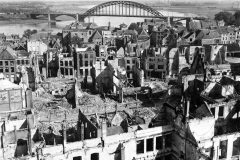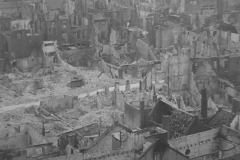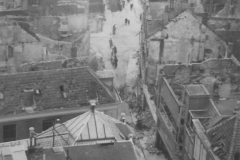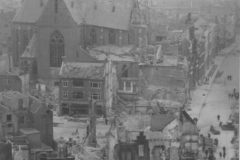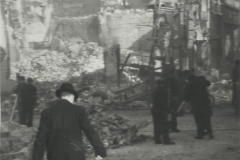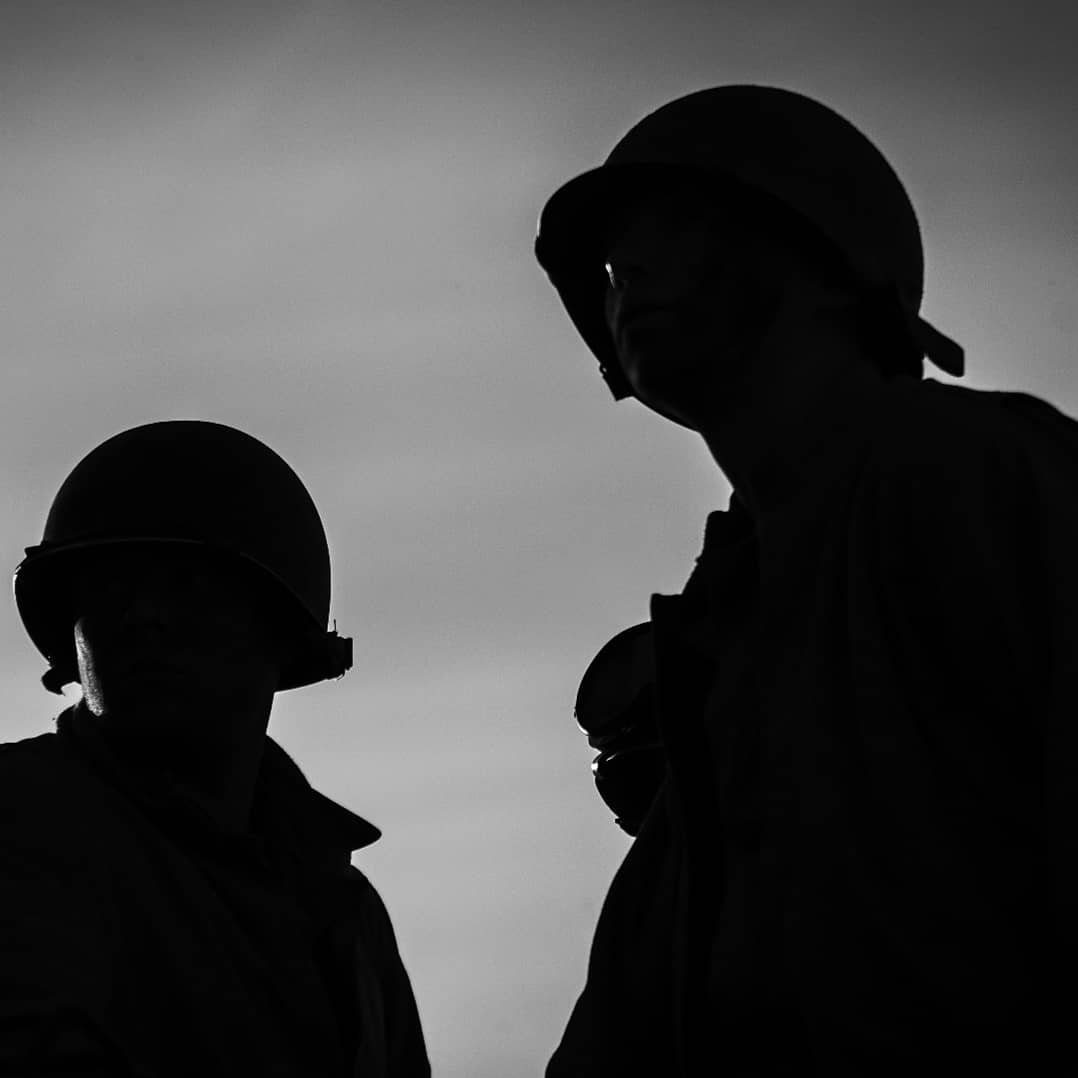The mistaken bombing of Nijmegen
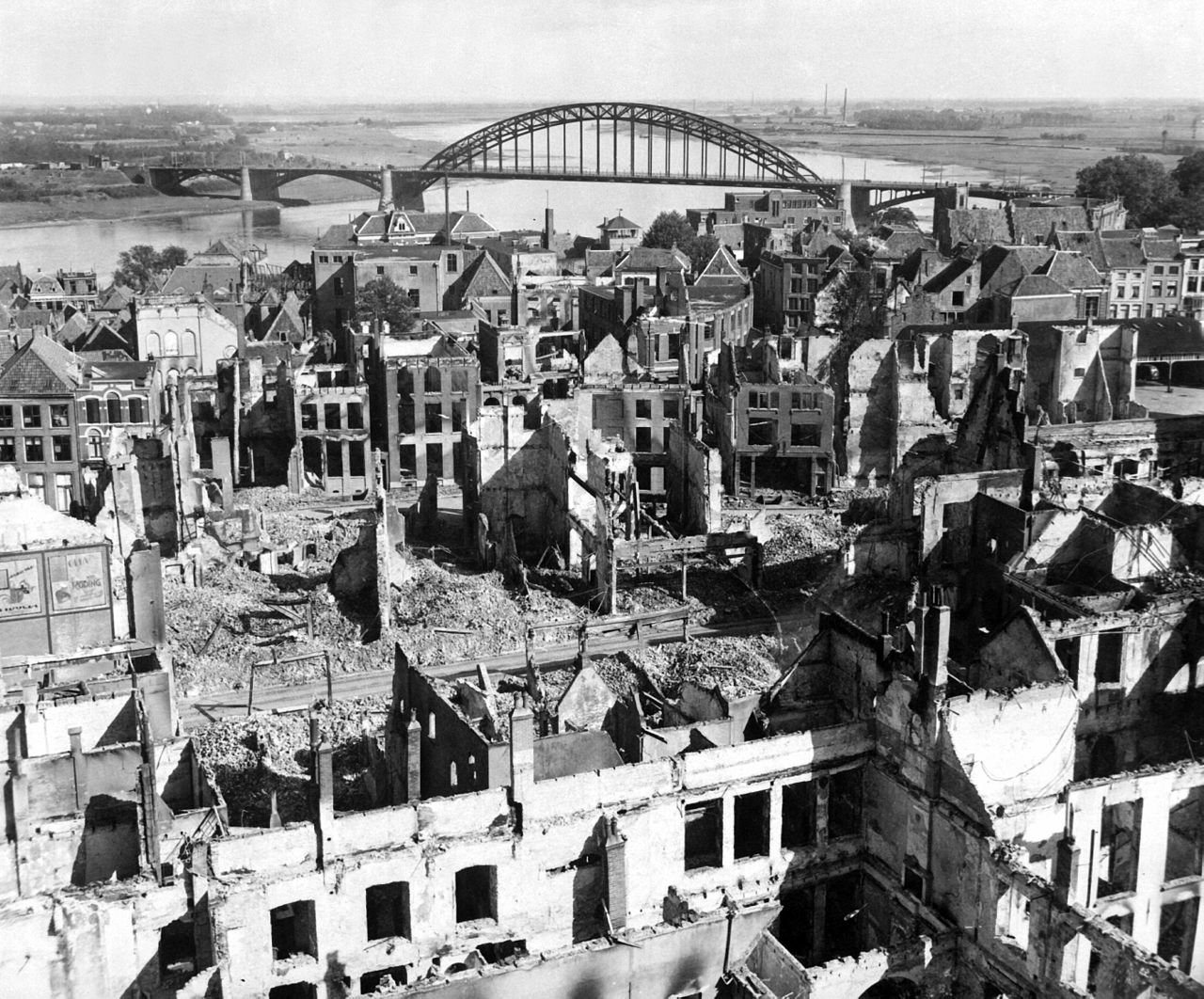
On the 22nd of February 1944 the city of Nijmegen, located in the Netherlands was shocked by loud noises, a shaky ground and a lot of dust. At 13:28 a squadron of American bombers dropped their bombs upon Nijmegen as a target of opportunity, but how and why was the historical city targeted? And was this really a mistaken bombing of Nijmegen?
Target of opportunity
On the morning of the 22nd of February 1944 a fleet of 177 American B-24 bombers took off with a modest escort from RAF Bungay airbase in the United Kingdom. Their target was the German city of Gotha.
In Gotha there was an aircraft factory producing the Messerschmitt fighters and other planes for the once so mighty Luftwaffe of Hermann Goering. With the allied bombing strategy in mind, this was a well-chosen target by the allied bomber command.
However it was standard regulation for allied bombers to not come back home with any bombs if they have been over enemy territory. They must have been dropped during the flight. This meant that there was always a primary target, a secondary target and the possibility to seek out a target of opportunity if these main targets fail. A target of opportunity is usually a train station, railway line, factories, bridges or something else that could disrupt the German war machine.
Events
The fleet of B-24 bombers had a lot of difficulties gathering into formation due to the high clouds that day. This meant that many planes lost sight and communication of each other and a large number of the group broke off. They interestingly abandoned mission. However a small group of aircraft continued the mission towards the primary objective.
When the formation of bombers was just above Germany they received a message from bomber command that the main target was canceled due to heavy cloud formations. Because the secondary target(Eschwege) was out of reach, the only available option was to find opportunistic targets. This meant a search for any target that will disrupt the German war machine and/or production.
The bombing
After the message was given there was a lot of chaos between the squadrons and many squadrons parted with the formation, leaving small groups of B-24 aircraft scattered in the air above the Netherlands searching for a target.
One of these groups consisting of 14 American B-24 Liberator bombers spotted the city of Nijmegen with a train station as the primary goal. At 13:28 the planes dropped 144 brisant bombs and 426 shrapnel shells onto Nijmegen. The train station was hit and damaged, however, a large number of bombs also dropped on the city center with residential homes. Destroying the historical center, the church and killing an estimated 800 people(probably more).
I know from personal testimonies of survivors that the ground was shaking, there was a lot of dust, fire, flying glass and above all chaos. However after the bombing raid the locals were volunteering to rescue any survivors and fight the fires in the burning city.
Many people fled the city to the surrounding villages after the bombing, due to the safety after the bombing, included the occupying Germans.
Aftermath
As soon as the squadron landed in Britain some pilots and airmen stated that they had bombed Nijmegen. A navigator even reported this in the air during the bombing. Yet the official Allied sources said that the pilots were still flying above Germany, thinking the city they had bombed was the German city of Kleve or Goch. Both are nearby Nijmegen just across the border.
Of course this was a great opportunity for the Germans to get the ‘best’ out of the situation for themselves and create some anti-allied propaganda. They said that the Dutch government in exile(London) had given permission for the airstrike. This was one of the ways the Germans tried to exploit the bombing to their liking.
After the war
The allied governments kept by their official statement that the bombing was a mistake and that the airmen thought they were flying over Germany instead of the Netherlands. After decades the first proper investigation was done in the summer of 1984 and these conclusions were documented in the book ‘De Fatale Aanval 22 februari 1944. Opzet of vergissing? De waarheid over de mysterieuze Amerikaanse bombardementen op Nijmegen, Arnhem, Enschede en Deventer‘ ISBN 90 269 4567 1.
Reference war deaths(in dutch): https://www.oorlogsdodennijmegen.nl/
